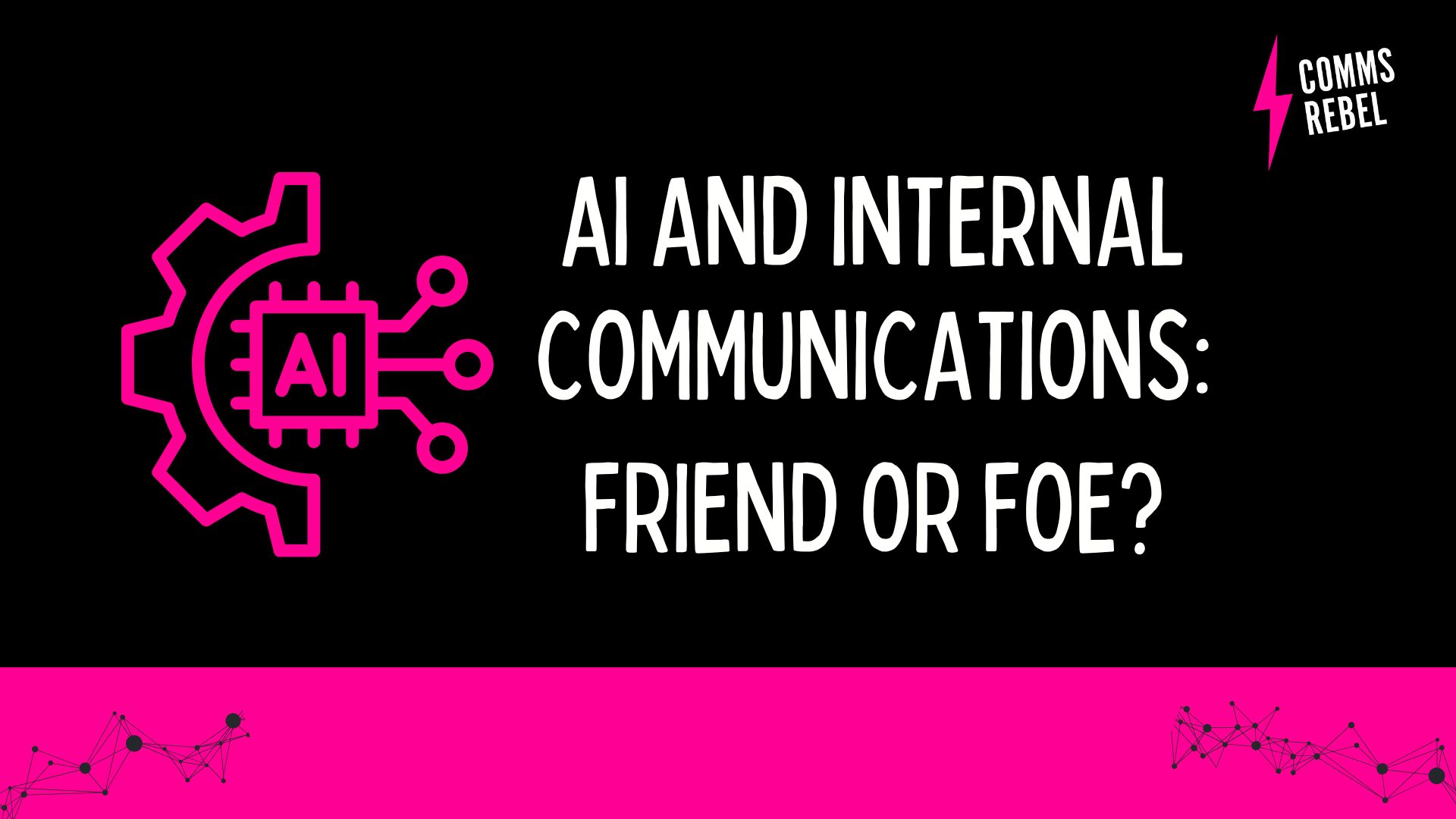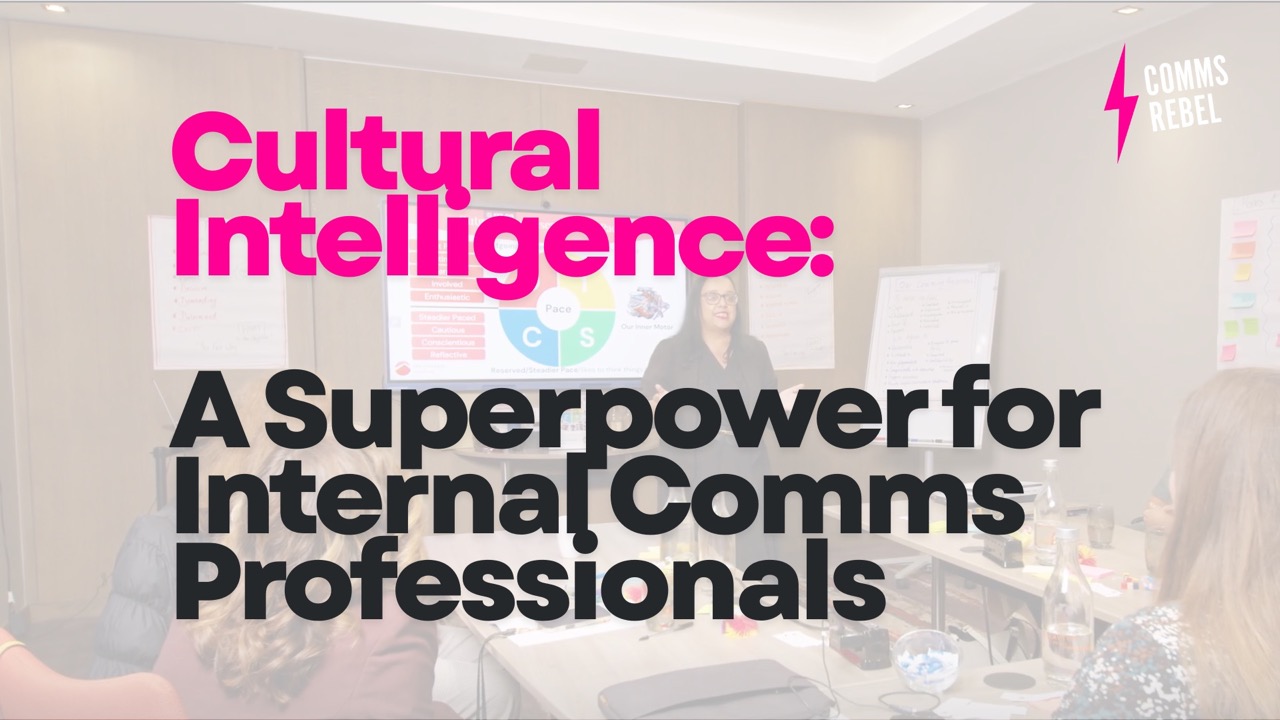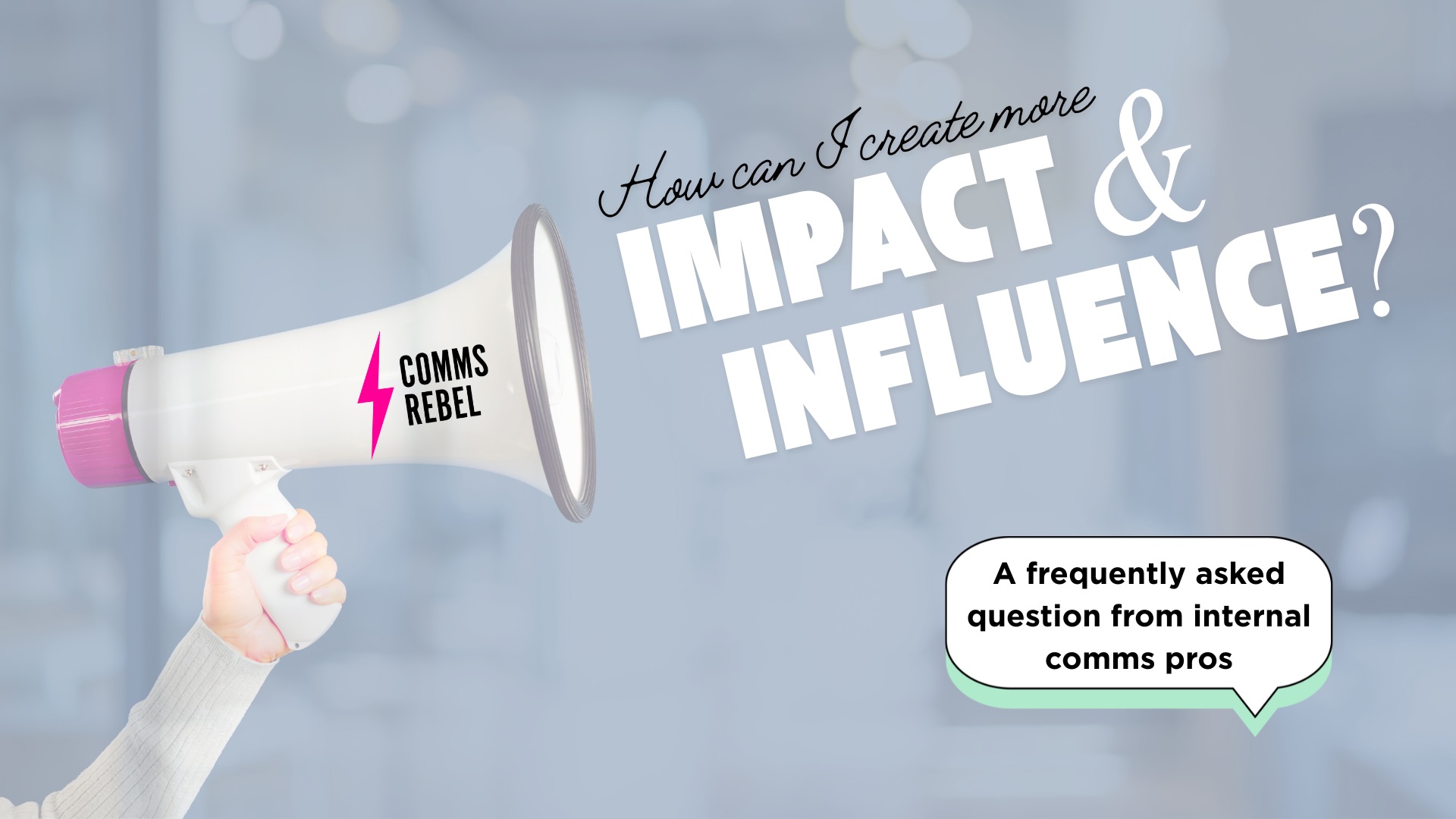There’s no denying that AI is making waves in every corner of the workplace, and Internal Comms is no exception.
From content generation to analytics, it’s changing how we work. Depending on how it’s used, AI can feel like both a threat and an opportunity, and for Internal Comms, it’s likely to be a bit of both.
We’ve pulled together our thoughts (and tips) on what AI could mean for IC professionals.
1. AI won’t replace us but it might change us
Let’s get one thing out of the way: AI isn’t about to take your job.
What it is doing is changing the kind of value we’re expected to bring. If your role is purely transactional, such as scheduling messages, updating intranet pages, formatting newsletters, then yes, AI tools could automate some of that. But the strategic thinking? The creative spark? The deep understanding of people and culture? That’s still very much human.
AI should free us up to do more of the meaningful stuff, not less.
2. Use it to boost productivity, not cut corners
There are some brilliant AI tools out there that can help us save time and work smarter. Things like:
- Drafting first versions of articles, emails or FAQs
- Summarising meeting transcripts
- Translating content for global audiences
- Spotting patterns in employee feedback
- Generating image ideas or visuals
The key is to treat AI as a co-pilot, not a replacement. Let it do the legwork. You bring the craft, context, and empathy that make communication land.
3. Get curious and start experimenting
You don’t need to be a tech expert to start exploring. Try a few tools out, see what feels useful and get comfortable asking, “Could AI help me do this faster or better?”
Start small:
- Use ChatGPT to help structure a campaign plan or write a comms brief
- Try a sentiment analysis tool to gauge employee feedback tone
- Explore AI tools in platforms you already use
You’ll only learn by doing. The sooner you start, the further ahead you’ll be.
4. Watch the risks (but don’t get paralysed by them)
Of course, we need to be mindful of ethics, data security, and accuracy. AI can sound confident while being totally wrong – and that’s dangerous if we don’t sense-check its outputs.
As trusted advisors, we’ve got a responsibility to ask the right questions:
- Where is this information coming from?
- Could this content be biased?
- Are we using data responsibly?
But don’t let the risks stop you from exploring altogether. Like anything new, it’s about learning the rules and working within them.
5. AI can help us prove our value
One of the most exciting things? AI could help us crack the measurement nut.
From analysing comms engagement data to spotting behaviour trends, AI gives us tools to better understand what’s working (and what’s not). That means we can show leaders the real, measurable impact of Internal Comms.
This kind of insight is gold dust when you’re trying to influence strategy or secure investment in your function.
AI isn’t coming for Internal Comms. It’s coming with Internal Comms.
The question is: will we step forward and use it to elevate what we do?
We should. No AI tool can replicate our ability to understand people, connect cultures, and drive change from the inside out.
Are you using AI in your work already or still figuring out where to start?
If you enjoyed reading this post, listen to Andrew Bruce Smith; he shares his top tips on AI in comms.
There are also lots of resources available on the CIPR website to learn more about AI in comms.


